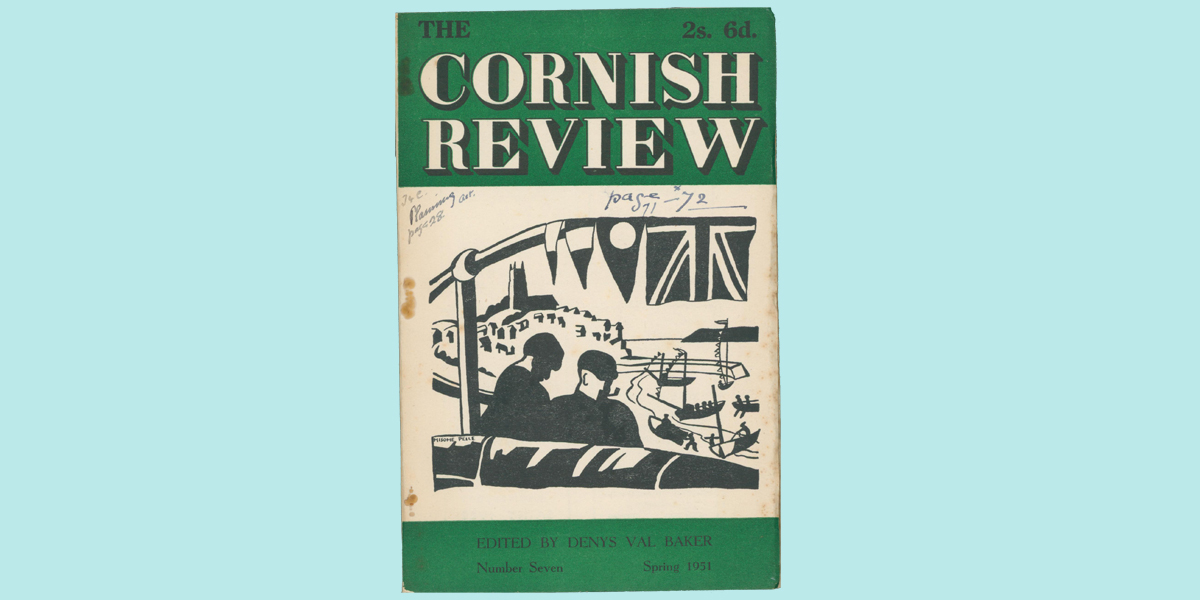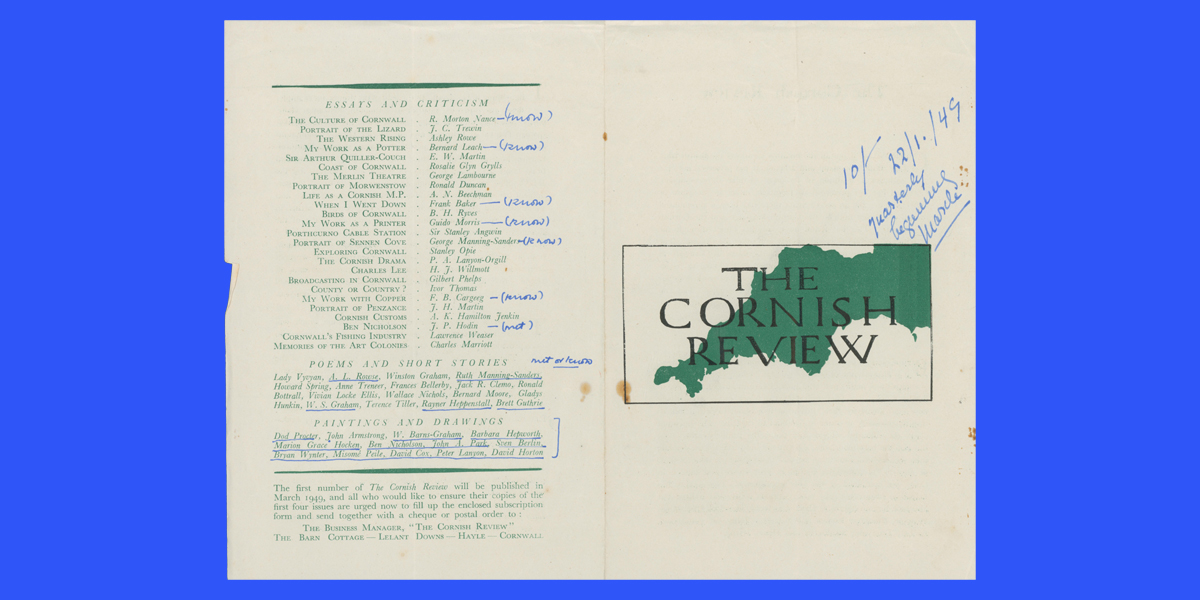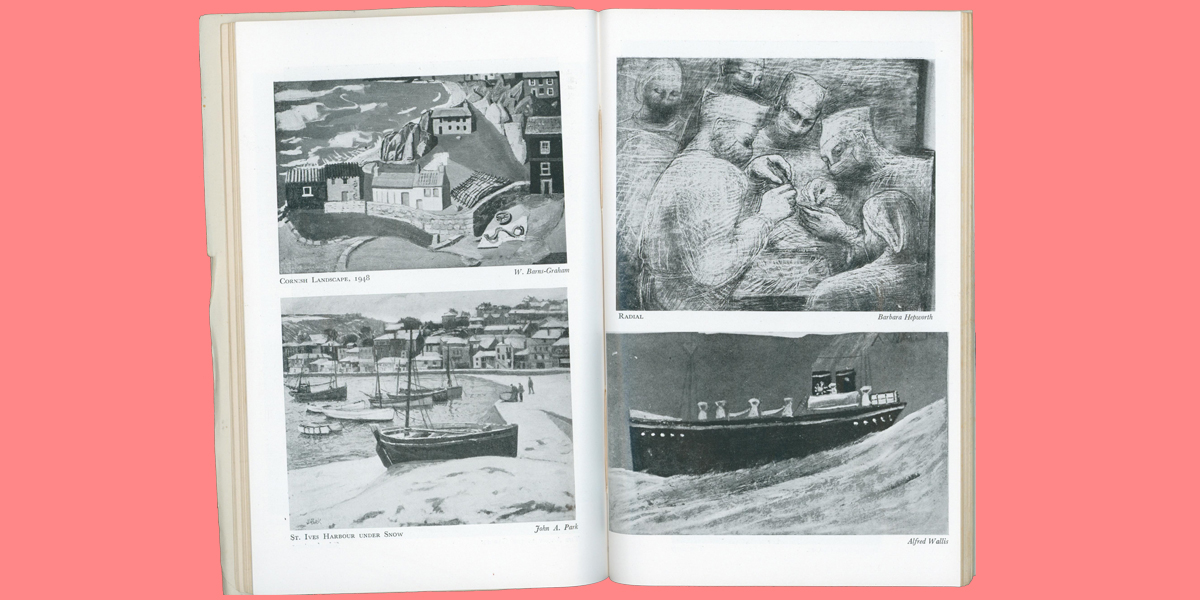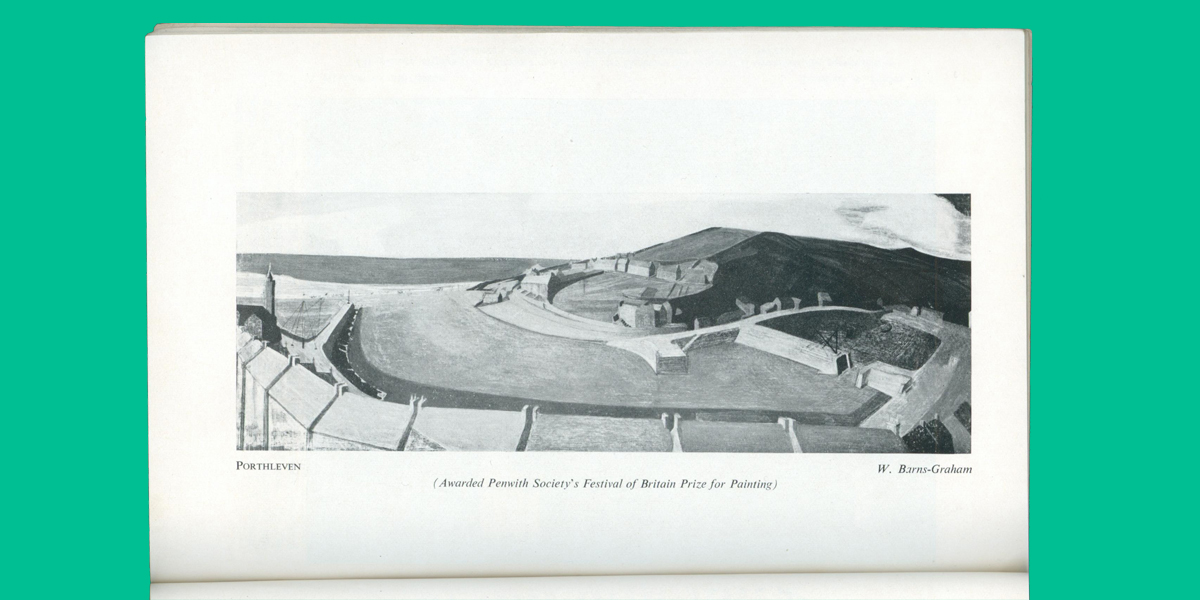The Cornish Review in Review
Sabrina Hall is studying for a Masters degree in Museum and Heritage Studies at the University of St Andrews. As part of a placement for her degree course, she has been cataloguing the art journals and periodicals collected by Wilhelmina Barns-Graham and now held in the Trust’s Archive and Library collections.

Cover of The Cornish Review Number 7 Spring 1951 (BGL679/18)
Wilhelmina Barns-Graham’s comprehensive personal collection of issues of The Cornish Review provides a valuable insight into the way her work was discussed at the start of her career, and when contrasted with the way her career is described retrospectively in twenty-first-century art publications, the need for the Wilhelmina Barns-Graham Trust periodical collection becomes evident. Barns-Graham was forced to unrelentingly assert her unique artistic point of view in order to be noticed in the sea of talent that was the Cornish art community, and while she has gained appreciation and press at certain points in her career and in the years following her death, it is crucial to examine each issue of The Cornish Review in her personal collection in order to properly contextualize the growth she achieved in the decades following her early years in St Ives.
A Brief History of The Cornish Review
The Cornish Review was edited by Denys Val Baker, a writer who moved from Yorkshire to Cornwall in the 1940s after being captivated by the Cornish coastline’s beauty. Deeply inspired by his new environment, Baker founded The Cornish Review in 1949, and the publication spanned three years and ten issues. Eventually, the magazine was revived for 26 more issues in 1966, but this piece focuses on The Cornish Review’s first iteration as those are the issues that make up the majority of the Trust’s collection. The Cornish Review was one of the earliest publications to promote the arts in Cornwall, and it featured poems, short stories, articles, and art news from the region. The magazine was adored by its readers but had very little financial support. There were only 1000 copies in circulation per issue. Because of the limited circulation, Barns-Graham’s collection of issues is now seen as a valuable historical resource for researchers.

leaflet advertising the cornish review with annotations by WBG indicating who she knows or has met (BGL679/1)
One of Many
With that in mind, it must be noted that being a part of the burgeoning art scene in Cornwall greatly informed the choices that Barns-Graham made throughout her career. She moved to St Ives in 1940 and most of her work from that period is seen to have been obviously influenced by the coastal landscape that surrounded her. That said, simply being passionate about the region was not enough to gain notoriety; there were so many artists flocking to St Ives at the time that keen tenacity was necessary to achieve eventual success. During Barns-Graham’s early career in Cornwall, she initially became a member of the St Ives Society of Artists, but resigned in 1949 and went on to be a founding member of the Penwith Society of Arts. The sheer volume of artists and artistic micro-communities in the region made it so that there were far more artists than there were publication opportunities, and the difficult nature of simply getting noticed is one factor that contributed to Barns-Graham’s only brief mentions in The Cornish Review.

A photographic spread in the first issue of The Cornish Review including Barns-Graham's Cornish Landscape (BGL679/1)
WBG in Print
That being said, there are a few notable mentions of Willie and her work in the issues of The Cornish Review that currently reside in the Trust’s collection, each one acting as a fascinating insight into the early stages of her career. In the Spring 1949 issue, Willie was listed as one of the magazine’s contributors and her painting Cornish Landscape, 1948 was reproduced in black and white in the centrefold article. Unfortunately, there is no context surrounding the painting’s inclusion and there was no other mention of Willie or her career in that issue. Two years later, in the Spring 1951 issue, Willie’s name was mentioned in relation to her inclusion in the St Ives Exhibition at Heal’s Mansard Gallery. Author Michael Williams did not actually enjoy the exhibition but noted that Barns-Graham’s work ‘was quietly effective in a glacial world of austere poetry.’ His tone shifted quickly, though, and went on to declare that the rest of the artists included in the gallery were a ‘sin.’’ Any positive mention of Barns-Graham’s work was immediately dwarfed by the overwhelmingly negative review of the show. Finally, in the Summer, 1951 issue, her painting Portheleven, 1951 was included as the centrefold, and it was quietly mentioned that she won the Penwith Society’s 1951 Festival of Britain Prize for Painting.

An Image of Barns-Graham's painting, Porthleven, 1951, published in The Cornish Review (BGL679/22)
Importance of Archives
So, while these may seem like notable mentions, the expansive nature of Barns-Graham’s collection of vintage issues of The Cornish Review help us to understand the fact that she was often looked over in her first decade as a Cornish artist. Of the ten issues of The Cornish Review in the collection, Willie was only mentioned three brief times. But, in spite of the fact that she was not mentioned in all of them, each issue of The Cornish Review must be preserved in order for modern researchers to understand her career. In the editor’s note at the start of the 2000 reprint of Britain’s Art Colony by the Sea, Denys Val Baker states that Barns-Graham was the ‘most respected of painters’’ and describes her as one of the most notable people to pioneer British abstractionist art. Praise like this was never mentioned in The Cornish Review. It is crucial that researchers review each and every issue of the magazine available in the archive in order to understand that the art world’s present-day appreciation for Barns-Graham’s work is not an accurate representation of the reception her work elicited in the mid-twentieth century. By analyzing these issues of The Cornish Review and their careful mentions of Barns-Graham’s work, the reader is able to grasp the sense of intense competition that existed within this notable community of St Ives artists, and recognize the incredible growth that Barns-Graham managed to achieve throughout her career.

